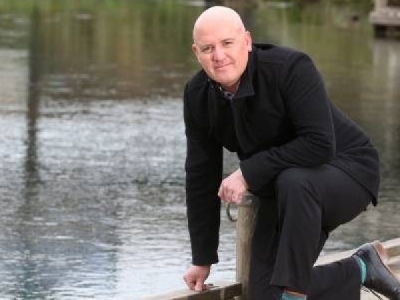
Posted on July 31, 2018
A Blenheim river that lost several sections of riverbank in the 7.8-magnitude earthquake, causing flooding upstream in heavy rain, is to be dredged this summer.
Slumping of the Op?oa riverbank, brought on by the Kaik?ura earthquake in November 2016, had caused water levels to rise in the lower Op?oa and Taylor River, which saw a rise of about 30 centimetres.
The Taylor River had become more prone to flooding in heavy rain, especially around the amphitheatre in central Blenheim.
The Taylor River in flood at the amphitheatre in March this year.
The Marlborough District Council planned to dredge the Op?oa River at various locations from December 1 to prevent ongoing flooding.
* Human poo in river as ‘unsafe’ samples keep warning signs up for winter
* Quake-money question: Is human poo in river a ‘major disruption’?
* Sewer search shows Third Lane likely behind river contamination
“Our assumption is that most of the flow restrictions occurred where the banks slumped and slid into the channel, and these are the areas we are targeting for dredging,” council rivers engineer Geoff Dick said.
The Taylor River at the amphitheatre in central Blenheim has become prone to flooding after the banks of the Op?oa River subsided in the Kaik?ura earthquake.
Council assets and services manager Richard Coningham said necessary preparation work was underway ahead of the date.
“At the moment we’re investigating equipment and having discussions with landowners,” he said.
“We’re also putting contracts in place for equipment, as there’s a need for a long-reach digger.”
After the Kaik?ura earthquake, vineyards in Riverlands part-subsided into the Op?oa River.
While dredging was expected to take place at several places along the Op?oa River, most of these were “out of town”, Coningham said.
Ad Feedback
He said dredging sites could not be revealed by the council until all landlords had been formally notified.
The report said there was an “ideal window” from December 1 to January 31, 2019 to complete the dredge work.
Warning signs explain the risks to people using the Taylor River reserve.
Coningham said this was because it was the driest time of the year.
“Were we to dredge now, all the ground would be waterlogged and it would be hard to get equipment down to the river,” he said.
“During summer it’s drier and getting equipment to the river is much easier. There’s also less water flow in the river.”
The Taylor River is a popular spot for walkers and cyclists.
He also said that under the Wairau Awatere Management Plan, dredging could not occur prior to December without obtaining a resource consent.
A report to council last week said it was “unlikely” that a consent would be granted prior to the December 1 date, “due to factors such as the whitebait season consultation with various community groups”.
The work was also not considered sufficiently urgent to complete earlier as emergency work, as it was “unlikely to cause loss to life, injury or serious damage to property if delayed until December,” the report said.
SCOTT HAMMOND/STUFF
Children playing in the Taylor River in January this year.
Also on the cards for the Taylor River was the replacement of its earthenware sewer system.
About 20 kilometres of earthenware pipe across Blenheim and Picton were damaged in the 2016 Kaik?ura earthquake, with between 3 to 4km reported to have ‘severe’ levels of damage.
Consultants had completed contract documents for the first stage of pipe replacement in Blenheim.
These contracts were expected to cover the replacement of the most severely affected pipelines.
The council hoped to wrap up repairs on the most severely damaged pipes in the next three years, before beginning on less effected areas.
Plans to repair the pipes leaking human sewage into the Taylor River were also expected to be completed within the next 12 to 18 months, the report said.
Due to the size and the anticipated cost of the project, the council budgeted for the full replacement of the earthenware sewer network over the next decade in their long-term plan in June.
The council was still gathering evidence for the Ministry of Civil Defence and Emergency Management and its insurers to satisfy insurance requirements, following almost 20 months of correspondence.
Insurance work needed to be completed prior to planning and auctioning repairs to the damaged sewer network, the report said.
Coningham he was “excited” for works to get underway.
Source: stuff





